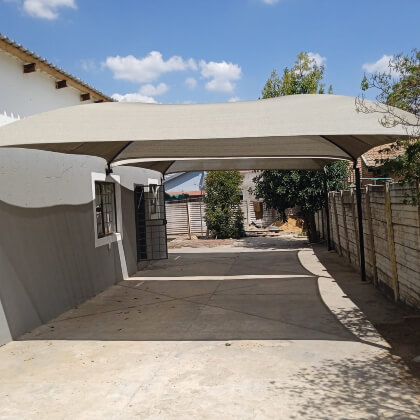
Shadeports are a highly popular and practical solution for shielding vehicles and outdoor spaces from the intense South African sun. Not only do they provide an effective barrier against heat and UV rays, but they also enhance the visual appeal of your property, offering a blend of functionality and aesthetics.
When it comes to installing a shadeport, one of the most important factors to take into account is its depth. Determining the appropriate depth for your shadeport is a critical step in ensuring its long-term durability, structural integrity, and overall safety.
Understanding Shadeport Depth Requirements
The depth of a shadeport refers primarily to the depth at which its supporting posts are embedded into the ground. This depth is vital for the stability and structural integrity of the shadeport, ensuring it can withstand environmental stresses.
Proper depth placement is crucial because it affects the shadeport’s ability to resist forces such as wind loads and ground movements. A shadeport that is not installed at the correct depth may be susceptible to tilting or even collapsing under certain conditions.
Determining the appropriate depth for your shadeport involves considering several factors, including the size of the structure and the specific conditions of the installation site.
Factors Influencing Shadeport Depth
Environmental factors play a significant role in setting the depth of a shadeport. Soil type, for instance, can affect how firmly the posts can be anchored; sandy or loose soils may require deeper post embedment to ensure stability.
Wind load is another critical consideration. In areas prone to high winds, such as certain parts of Gauteng, deeper foundations may be necessary to prevent the shadeport from being uprooted or damaged during storms.
Usage considerations also influence depth requirements. If the shadeport is intended to shelter larger vehicles like SUVs or trucks, or to cover expansive areas, the structural demands increase, necessitating deeper posts for added support.
Standard Depth Measurements for Shadeports
While depth requirements can vary, a common industry standard for shadeport post depth is approximately one-third the length of the post above ground. For example, if the shadeport stands three meters high, the posts should be buried at least one meter deep.
However, these measurements are not absolute. Optimal depth considerations for installing a shadeport should be tailored to the specific site conditions and structural requirements. Consulting with professionals can ensure that the depth is adequate for long-term performance.
By taking into account all relevant factors, you can determine the appropriate depth for your shade structure. This attention to detail not only enhances the shadeport’s durability but also its safety and effectiveness in providing shade.
In Summary
Selecting the correct depth for your shadeport is essential for ensuring its stability and longevity. By considering factors such as soil type, wind load, and usage requirements, you can achieve a shadeport installation that is both safe and effective.
If you’re looking to install a shadeport tailored to your specific needs, get a free quotation from our team of professionals. We are ready to help you determine the optimal depth and design for your shadeport to ensure maximum protection and durability.

Mike Shades is an experienced shade netting specialist with over 13 years of expertise in manufacturing and installing high-quality shade structures. His dedication to providing cost-effective solutions with a 10-year warranty on materials reflects his commitment to excellence. Based in Gauteng, Mike’s innovative designs cater to various needs, ensuring top-notch service and unbeatable prices.



